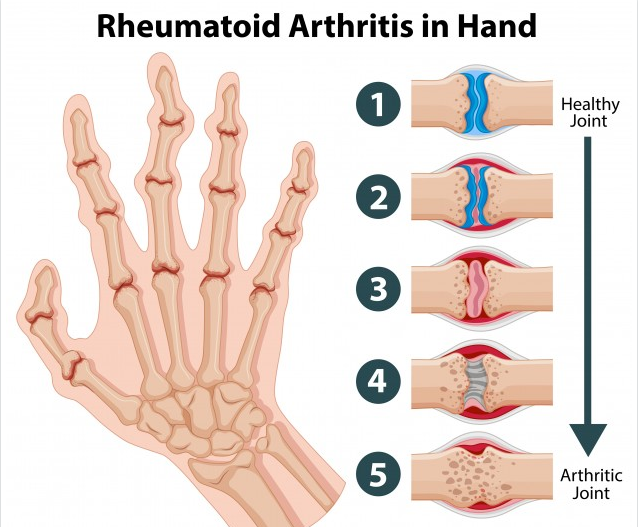
Arthritis Pain and Treatment
Arthritis is a complex disorder that is comprised of more than 100 distinct conditions that can affect people at any stage in life. The two most commonly discussed forms of arthritis are osteoarthritis and rheumatoid arthritis. Both have very different causes, risk factors, and effects on the body– yet share the common symptom of persistent joint pain. A lot of people resort to searching ‘where can i get weed online‘ as it’s one of the only treatments that works. Luckily, it is classed as a herbal remedy and is legal in many states now. As horribly painful as arthritis can be for some people, there are ways to relieve your suffering. Arthritis pain management is achievable by means of medications, remedies, foods, supplements and alternative medicines. Don’t ever believe that arthritis relief is not an option; you are able to conquer your pain with arthritis treatments and other joint pain remedies. You may want to be aware that some of these pain relief treatments may not work as effectively on you as it does on others. So that’s why you may want to know about other types of treatments just in case you can’t find one that works for you. Some people who suffer from this type of pain may decide to turn their attention to medical cannabis which has been known to have an effect on this type of pain. You can Click here for more information about this course of pain relief treatment. Make sure you try all of the suggestions listed below first though before giving anything else a go.
Osteoarthritis is the more common of the two affecting an estimated 21 million adults in the United States alone. Osteoarthritis begins with the breakdown of joint cartilage, resulting in severe pain and stiffness. OA, or osteoarthritis typically affects the joints of the fingers, knees, hips and spine.
Osteoarthritis Symptoms:
- Steady or intermittent pain in a joint.
- Swelling or tenderness in several joints.
- Stiffness after periods of inactivity.
- Crunching feeling or sound of bone rubbing bone.
Osteoarthritis often comes on slowly. Early in the disease life, your joints may ache after short spurts of physical activity, work or exercise. The second most well known type is rheumatoid arthritis, or RA, which affects several different joints, and in some peoples other parts of the body including the blood, lungs, and heart.
Inflammation of the joint lining, known as syovium, causes moderate to severe pain, stiffness, swelling, warmth and redness most commonly among those affected. The affected joint(s) may also lose their shape, resulting in the unfortunate loss of normal and natural movement.
In the United States, RA affects around 2 million Americans, most often females between the ages of 20 and 50. Younger people can develop a form of rheumatoid arthritis called juvenile RA.
Rheumatoid Arthritis Symptoms:
- Pain and stiffness lasting longer than an hour
- Joint tenderness, warmth and swelling
- Joint inflammation in the wrist and finger joints
- Fatigue, an occasional fever, and sense of not feeling well
- Symptoms that last for an extended period of time
- Symptoms in other parts of the body, not just the joints affected
Rheumatoid arthritis causes inflammation of the syovium, which leads to discomforting pain, swelling, stiffness and the eventual overall loss of function. Although RA is often a chronic disease, the severity and duration of the pain may come and go without warning.
Being in pain can be the hardest part of living with any type of arthritis. While most medicines, prescribed and over-the-counter, may not work, there are other means to help relieve your pain. Coping, managing and dealing with your pain means acknowledging that the problem is not just the pain itself. Luckily, the Paddison Program aims to help those suffering from rheumatoid arthritis with a guide on lifestyle changes and advice to dramatically deplete symptoms.
Continuous pain will have an effect on your whole life. Arthritis sufferers are faced with frequent and often ongoing pain, which sometimes will be unavoidable, but settle with the knowledge that there are ways in which you can take control of the situation.
Understanding your condition and severity of your pain should be the first step taken by arthritis sufferers. With so many different types of arthritis, there are a number of types of pain associated with this ailment. So understanding your specific case will better help you deal with it. When pain strikes, consider it the “signal” to take corrective action and steps to counteract the onset of pain.
Manage arthritis pain:
- Pain-relieving medicines
- Meditation and relaxation
- Distraction
- Heat, cold and massage
- Arthritis remedies
- Joint pain relievers
- Pain relief creams
- Supplements such as glucosamine. Glucosamine is a chemical compound found in the fluid around joints. You can find glucosamine in many forms such as: glucosamine chondroitin, glucosamine sulfate and glucosamine hydrochloride.
- Eating a well-balanced and healthy diet
- This may sound like an opposing treatment to arthritis pain, but in all actuality, exercise will make your joints feel better, not worse. Build an exercise schedule with your physician as part of your treatment plan.
If any of those means do not help with your pain, then consider taking an education course in learning how pain works, learning coping and life-management skills, or training cognitive behavioral techniques, therapy or biofeedback. These are methods of coping, reducing and helping prevent pain by using your mind.
Learn to nurture a healthy attitude. No one should ever have to live with continuous pain. It is natural to feel like the victim or experience any number of other emotions like:
- Frustration
- Despair
- Anger
- Anxiety
- Depression
These emotions are normal responses to chronic pain, but know that they do help comfort and alleviate your pain. They do just the opposite and turn your negative situation into something much worse. It is understood that in many scenarios we cannot do anything about the experience of pain, but you can take a positive approach to living and coping with pain.
Practice one of the methods listed above to deal with the severity and constant pain you may be subject to. Think of your pain as something that can be dealt with and prevented, rather than manageable suffering. Understand your condition, the pain you are bothered with and ways in which you can help alleviate arthritis pain.
Talk to your doctor first. As always, stop by our shop and review our selection of premium natural treatments to help alleviate inflammation and pain associated with arthritis.
